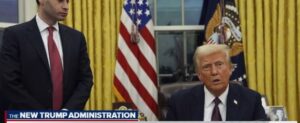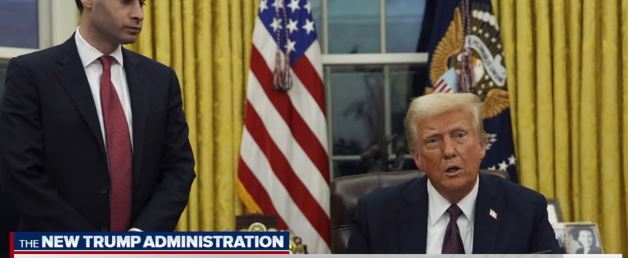Judge temporarily blocks Trump’s executive order on birthright citizenship
Federal Judge Temporarily Blocks Trump’s Birthright Citizenship Executive Order
A federal judge in Seattle has temporarily halted President Donald Trump’s executive order that sought to limit birthright citizenship, a provision long guaranteed by the 14th Amendment of the U.S. Constitution. This legal development comes after a request from four Democratic-led states to block the executive action, which could have affected the citizenship status of thousands of children born in the U.S.

Judge Deems Executive Order “Blatantly Unconstitutional”
U.S. District Judge John Coughenour signed the temporary restraining order after reviewing arguments from the attorneys general of Arizona, Oregon, Washington, and Illinois. The executive order, signed by President Trump, aimed to restrict birthright citizenship, asserting that children born to undocumented parents would not be granted U.S. citizenship unless at least one parent is a U.S. citizen or legal permanent resident.
Judge Coughenour, who has served on the bench for over 40 years, strongly criticized the order, calling it “blatantly unconstitutional.” He noted his difficulty in understanding how the Department of Justice could assert the order’s constitutionality, stating, “It boggles my mind.”
Legal Challenge to the Executive Order
The lawsuit, filed by the four states, argues that the executive order would strip citizenship from over 150,000 newborn children annually. According to the attorneys general, these children would be denied full participation in American society, with many facing the risk of being rendered undocumented or stateless.
The states also argued that this executive order would cause irreparable harm to children born in their jurisdictions, as it would affect their legal rights, such as voting, serving on juries, and running for certain political offices.
DOJ Opposes Temporary Restraining Order
In the court hearing, DOJ attorney Brett Shumate opposed the request for a temporary restraining order, suggesting that since the executive order wouldn’t take effect until February 19, there was no imminent harm that warranted such an order. Shumate argued for the case to be fully briefed before any decisions were made.
Despite this, Judge Coughenour decided to proceed with the temporary block, underscoring the urgency of the situation and the potential harm to children who would be affected by the policy.
What Trump’s Executive Order Entails
Trump’s executive order sought to reinterpret the 14th Amendment, which has long guaranteed birthright citizenship to anyone born on U.S. soil. The order argued that children born to undocumented parents should not be granted citizenship, based on the clause “subject to the jurisdiction thereof,” which the administration contended excludes children of parents who are not legally in the U.S.
This move is part of Trump’s broader immigration policy agenda, which includes efforts to limit immigration and tighten border security. Legal scholars have expressed skepticism regarding the legality of the order, particularly given the historical precedents that enshrine birthright citizenship, such as the landmark 1898 Supreme Court case that confirmed birthright citizenship for the U.S.-born child of Chinese immigrants.
The Road Ahead: A Lengthy Legal Battle
This ruling marks the first legal test of Trump’s controversial executive order. It is expected to spark a lengthy legal battle, with the potential for the case to ultimately reach the U.S. Supreme Court. The order is part of a larger push by the Trump administration to change immigration laws and policies that have been in place for over a century.
While the temporary restraining order halts the implementation of the executive action for now, the battle over birthright citizenship is far from over. The coming weeks and months will likely see additional court hearings and legal briefs, and the final decision could have profound implications for U.S. immigration law.




